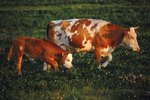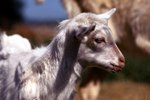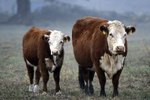
The time of year when calves are born is called the “calving season,” but when it starts is variable. Due to modern breeding management, calving can happen any time of year when a cow is ready to give birth. These types of ranches that raise calves are called “cow-calf” operations. Breeding herds calve around the same time when ranch resources, such as labor and feed, are available, and calving seasons are vulnerable to environmental factors.
Family Tradition
More than 97 percent of cattle producers are family-operated farms and ranches. Many of these are generational families, having ranched in areas, like Fallon, Nevada, for more than four generations. Calving season a family tradition, an anticipated time of year that brings excitement for the prosperity of the herd, as well as extra work from monitoring the calves day and night. Ranchers develop a strong bond with their herd, and it begins with calving.
Spring Calves
Spring calves reflect the nature of when most animals are born, although cattle producers manage breeding cycles. When spring comes is relative to where a ranch is located. Spring calving in California starts earlier than in Montana, but generally is between January and April. When a calf is born, it weighs between 60 and 100 pounds. He’ll drink his mother’s milk for a few months then start grazing on grass, which is why ranchers try to time calving with greening pastures.
Fall Calves
Other ranchers manage their breeding herd to calve between late summer and early fall. Fall calving often is a response to feed availability or market prices, or a strategy used by ranchers to prevent scours -- a viral or bacterial diarrhea in newborn calves. This type of calving occurs in climates with availability to cool-season pastures, such as those in the southeast. Fall calving in Montana is not something you would expect given the harsh winters.
Cold Weather
Northern climes are dangerously cold for spring calves, and most ranchers monitor the births by bringing the cows to calving barns. A calving barn often is a stand of small huts where a wet, newborn calf can escape a spring blizzard. Cowboys, who work on ranches during the calving season, have been known to wrap up a calf in their own sleeping bag and warm him up by the bunk house pellet stove.
Predators
The calving season is a feeding opportunity for predators. While some predators are content to clean up the afterbirth, others strike at the weak newborn. Coyotes are the number one predator of calves, although dogs, wolves and bears attack, too. Some cowboys live among the herd during the season, and other ranchers use llamas or guard dogs to run off coyotes. Most ranchers increase herd monitoring during the calving season to ward off predators.
Drought
A drought has greatly impacted the beef cattle industry in the United States since 2010, and the industry is shrinking. This means ranchers will have to manage their herds in response. If pastures are not available because of drought, cattle producers might send their breeding cows and heifers -- young cows, usually retained to produce more calves -- to market. When weather patterns stabilize, they will start building up their herds again through increased calving.
Resources
Photo Credits
-
Ralf Nau/Lifesize/Getty Images
Writer Bio
Charli Mills has covered the natural food industry since 2001 as a marketing communications manager for a highly successful retail cooperative. She built teams, brands and strategies. She is a writer and editor of "This is Living Naturally," a consultant for Carrot Ranch Communications and a Master Cooperative Communicator.




